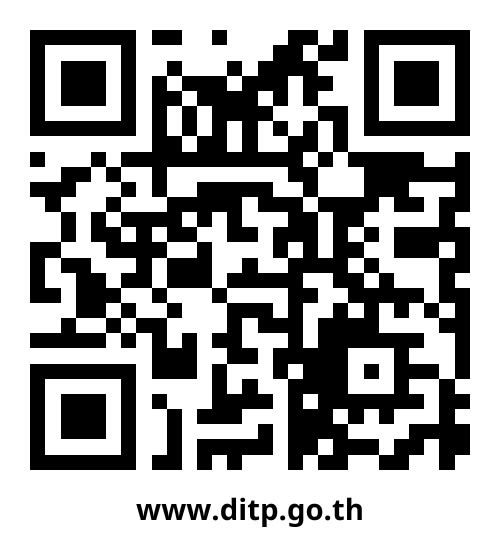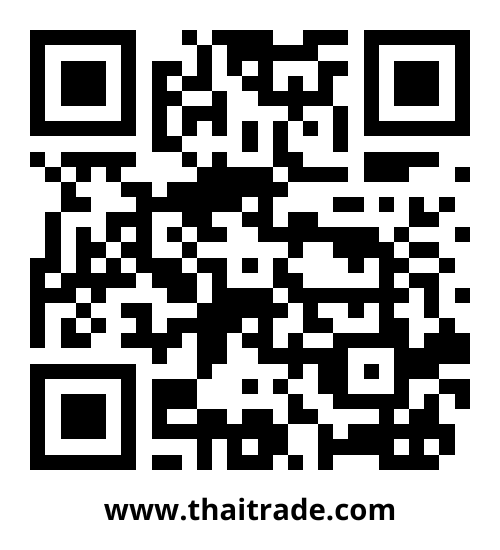Thai Pet Foods Feed Our Real Best Friends with Love!
In today’s pet care landscape, there’s a notable shift towards treating pets as integral members of the family—a phenomenon often termed “Pet Humanization.” This trend, observed among both seasoned pet caregivers and newcomers alike, has led to a significant rise in pet care expenditure.
The success of Thailand’s pet food export industry can be attributed to the effective strategies and initiatives implemented by the Ministry of Commerce. With a clear focus on meeting the evolving demands of modern consumers and leveraging Thailand’s strengths in production and expertise, the Ministry has facilitated the rapid expansion of the pet food sector. Through initiatives such as promoting premium products, strengthening service exports, and capitalizing on digital content, Thailand has positioned itself as a leading exporter in the global pet food market. Furthermore, the benefits derived from Free Trade Agreements and the resilience demonstrated amidst challenges like the COVID-19 outbreak highlight the Ministry’s commitment to sustaining growth and competitiveness. As a result, Thailand continues to thrive as the world’s third-largest pet food exporter, with a target set for further expansion in the coming years.
Thailand’s Pet Foods industry stands as a shining example of this trend, thriving as the world’s third-largest pet food exporter. With an ambitious export target of USD 2,538.4 million set for 2024—a projected expansion of 3%—Thailand’s pet food sector is poised for continued growth (data sourced from the Factsheet on pet food products collected by Office of Agricultural and Industrial Trade Promotion, DITP.

Exports in 2024 (Jan. – Feb. 2024):
In the initial two months of 2024 (Jan. – Feb.), Thailand’s pet food exports soared to approximately USD 446.33 million (or roughly 15,631.47 million baht), reflecting an impressive growth rate increase of +15.25%. The United States emerged as the primary export destination, accounting for about 26.77% of Thailand’s total pet food exports, with a value of USD 119.47 million and a growth rate of +35.38%. Thailand caters primarily to the middle to upper-level (Premium) market, offering high-quality pet food enriched with health-promoting ingredients or Functional Food, aligning seamlessly with evolving pet owner preferences.
Strengths of Thai pet food products:
- Thailand boasts lower production costs, particularly in labor, giving it a competitive edge over major rivals.
- Leveraging its expertise in production, some Thai pet food businesses have expanded from canned tuna production lines, enhancing proficiency in production, research, and product development, thus ensuring cost savings (Economies of Scope).
- Most importing countries demand high standards of animal welfare and are willing to pay a premium for quality pet food, contributing to Thailand’s success in the global market.
- Thailand benefits from the growing import rates of key importing countries such as the United States, China, South Korea, and Germany, fueling its export growth.
- Geographically, Thailand’s strategic location provides easy access to key trading partner markets, particularly in the US market, where geographical distance has minimal impact on imports.
- With a substantial presence in critical markets like the US and Japan, Thailand enjoys a significant market share, creating barriers for potential competitors.
- Despite the challenges posed by the COVID-19 pandemic, Thailand’s pet food exports remain resilient, with demand sustained from key importing countries such as the US, China, and Japan.
Strategies/Demands of the Private Sector:
The private sector has adopted four major strategies to further promote Thai pet food products:
- Accelerating the entry of existing products into the market to strengthen market presence and increase exports, particularly to China.
- Introducing premium products emphasizing domestic raw materials to position Thailand as a producer of premium pet food, shifting from price competition to competition based on higher nutritional value.
- Strengthening the service sector domestically to enhance expertise in comprehensive animal care, potentially expanding towards service exports.
- Capitalizing on the growing demand for entertainment media content related to pets by promoting digital content, including pet care information and advice.
Benefits from Free Trade Agreements (FTAs):
Free Trade Agreements (FTAs) play a vital role in driving the growth of Thailand’s pet food industry. Currently, all Thai pet food products enjoy exemption from import taxes in 15 countries covered by Thailand’s FTAs, including ASEAN members, China, Australia, New Zealand, Chile, Peru, and Hong Kong. However, import taxes are still imposed on some products in countries like Japan, South Korea, and India.
Unveiling the World of Thai Pet Food:
(Summary of information from the Baan Lae Suan website https://www.baanlaesuan.com/286141/pets/food/types- of-pets-food)
Thailand stands out as a global leader in the pet food sector, renowned for its expertise and stellar reputation. Boasting an array of production facilities, the country offers a diverse range of pet food, broadly classified into three categories: Wet Food, Dry Food, and Semi-moist Food. Here’s a brief overview of each type:

Wet Food:
Containing over 60 percent moisture, typically ranging from 70 to 80 percent, wet food is widely regarded as the most palatable option for pets. Veterinarians often recommend it for animals that are unwell, have lost their appetite, struggle to eat, or require tube feeding.
The texture of wet food varies based on manufacturers’ preferences and nutritional objectives. While suitable for all animals in various forms, palatability can be influenced by factors such as meat size, firmness, and food fluffiness. Cats, known for their discerning tastes, may prefer specific textures.
Advantages of wet food:
One key advantage is its ability to encourage pets to consume more water, as many animals prefer it over clean water. This is particularly beneficial in cases requiring increased hydration, such as kidney disease or gallstone prevention. Additionally, frozen cooked food or homemade diets fall under this category due to their high moisture content.
Disadvantages of wet food:
Despite its appeal, wet food generally contains lower food content, prompting pets to eat larger quantities to meet their daily energy needs. Pets may also consume wet food quickly, feeling full prematurely due to its high water content. This can lead to inadequate nutrient intake and potential obesity. Moreover, additives may give the impression of negligible water content, potentially leading to overfeeding.
Storing wet food:
Caution is essential when handling wet food for pets. If leftovers remain after 30 minutes, they should be discarded, and containers promptly cleaned. Thailand’s warm climate and high humidity create ideal conditions for germ growth, posing health risks. Wet food should either be used immediately after opening or, if stored, kept covered and refrigerated. It’s advisable to use refrigerated wet food within 48 hours. Microwaving wet food is discouraged as it can destroy vitamins, diminishing its nutritional value. Proper heating involves mixing warm water with wet food until reaching the desired temperature before serving to pets.

Dry Food:
With a moisture content typically ranging between 3 and 11 percent, dry food offers a convenient and long-lasting option for pet nutrition. Its low humidity makes it resistant to bacterial and fungal growth, allowing for extended storage in dry environments once opened. Pet owners should, however, ensure proper storage, noting the expiration date and condition of the food.
Containing ingredients in larger quantities compared to wet food, dry food provides animals with necessary energy and nutrients without the need for large consumption. Despite its nutritional benefits, the reduced moisture content affects palatability. Nevertheless, its convenience allows pet owners to leave dry food out for up to 24 hours, simplifying feeding routines compared to wet food.
Moreover, the act of chewing dry food promotes gnashing between the pellets and teeth, reducing the likelihood of tartar or plaque formation when compared to wet food. This additional dental benefit contributes to the overall oral health of pets.
Semi-Moist Food:
Featuring a moisture content ranging between 25 and 35 percent, semi-moist food offers a balance between palatability and convenience. While more appealing to pets than dry food, it falls slightly short of the high moisture content found in wet food. However, due to its moisture content, semi-moist food is not suitable for prolonged periods in the bowl.
Similar to wet food, leftover semi-moist food should be discarded if pets do not finish eating within 30 minutes, with any remaining portions used within 48 hours of opening the package. This type of pet food has recently entered the market in Thailand, offering another option for pet owners.
To gauge moisture content, pet owners can refer to the information provided on the side of the animal feed bag. When selecting pet food, it’s crucial for owners to consider the advantages, disadvantages, and handling precautions of each type to ensure their pets’ well-being. Factors such as quantity, type, and nutritional value should also be taken into account.
In cases of uncertainty or specific dietary requirements, consulting a veterinarian is recommended to determine the most suitable options for pets. This professional guidance ensures that pet owners make informed decisions regarding their pets’ nutrition and health.
In today’s consumer landscape, characterized by the phenomenon of “Pet Humanization,” the emphasis on raw material standards and safety takes precedence. Exporters are tasked with navigating stringent import regulations, adhering to diverse destination country standards, and staying attuned to evolving consumer demands, particularly those of emerging consumer segments. While Thailand reaps the benefits of rising import rates from key markets such as the United States, China, South Korea, and Germany, continual product innovation and enhancement of marketing strategies are essential to sustain market share and capitalize on new opportunities amidst the unpredictable global economic climate.





